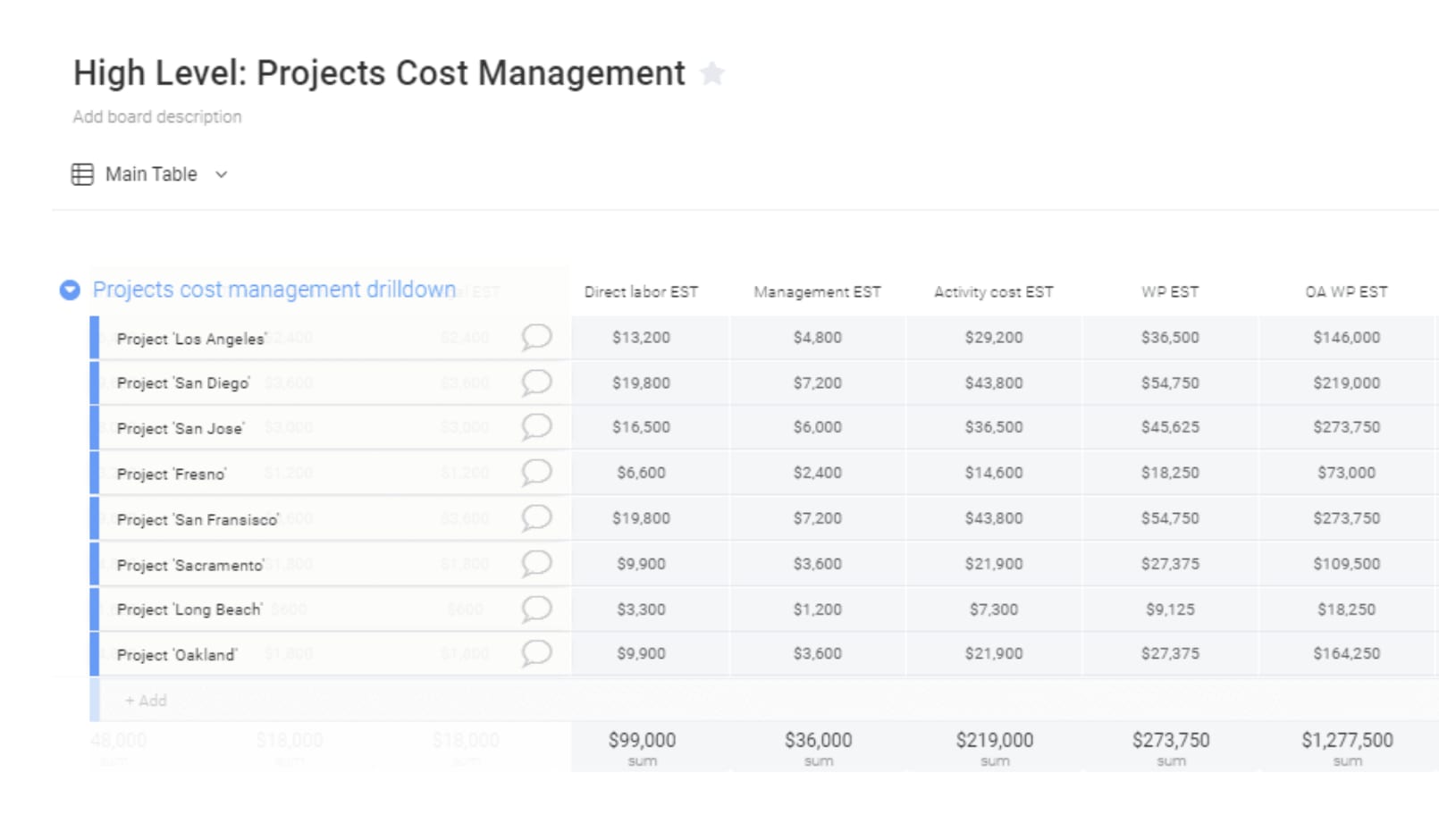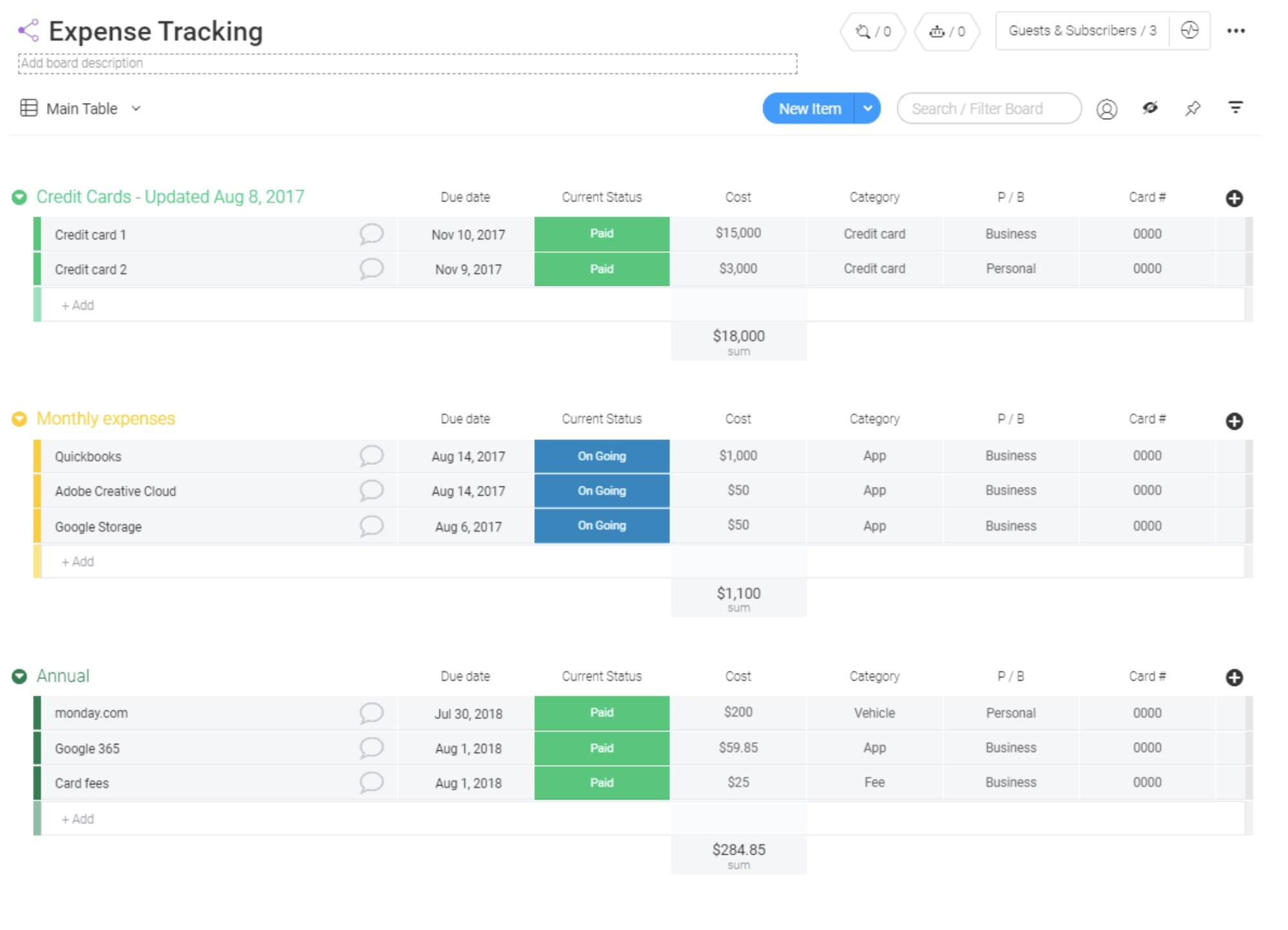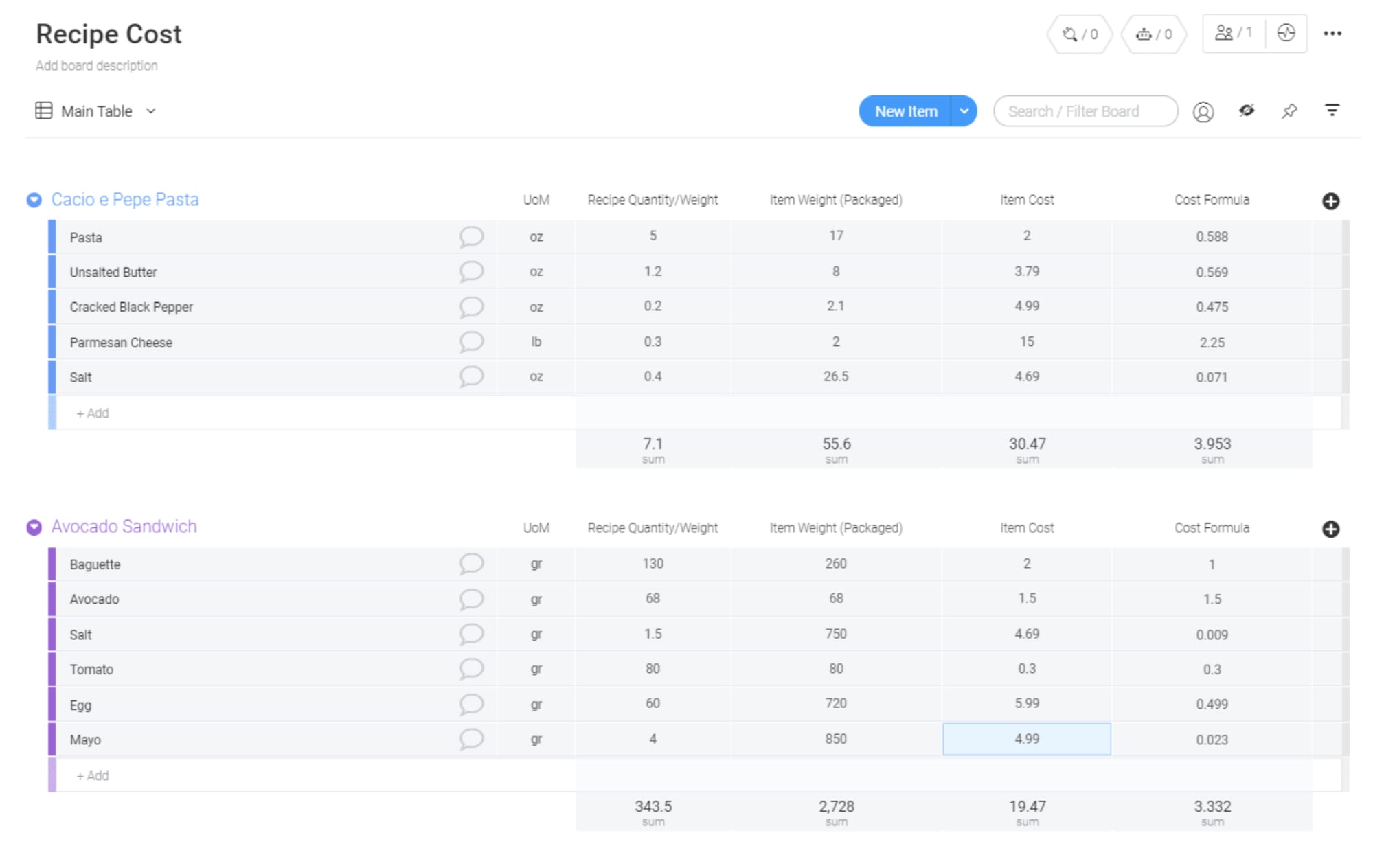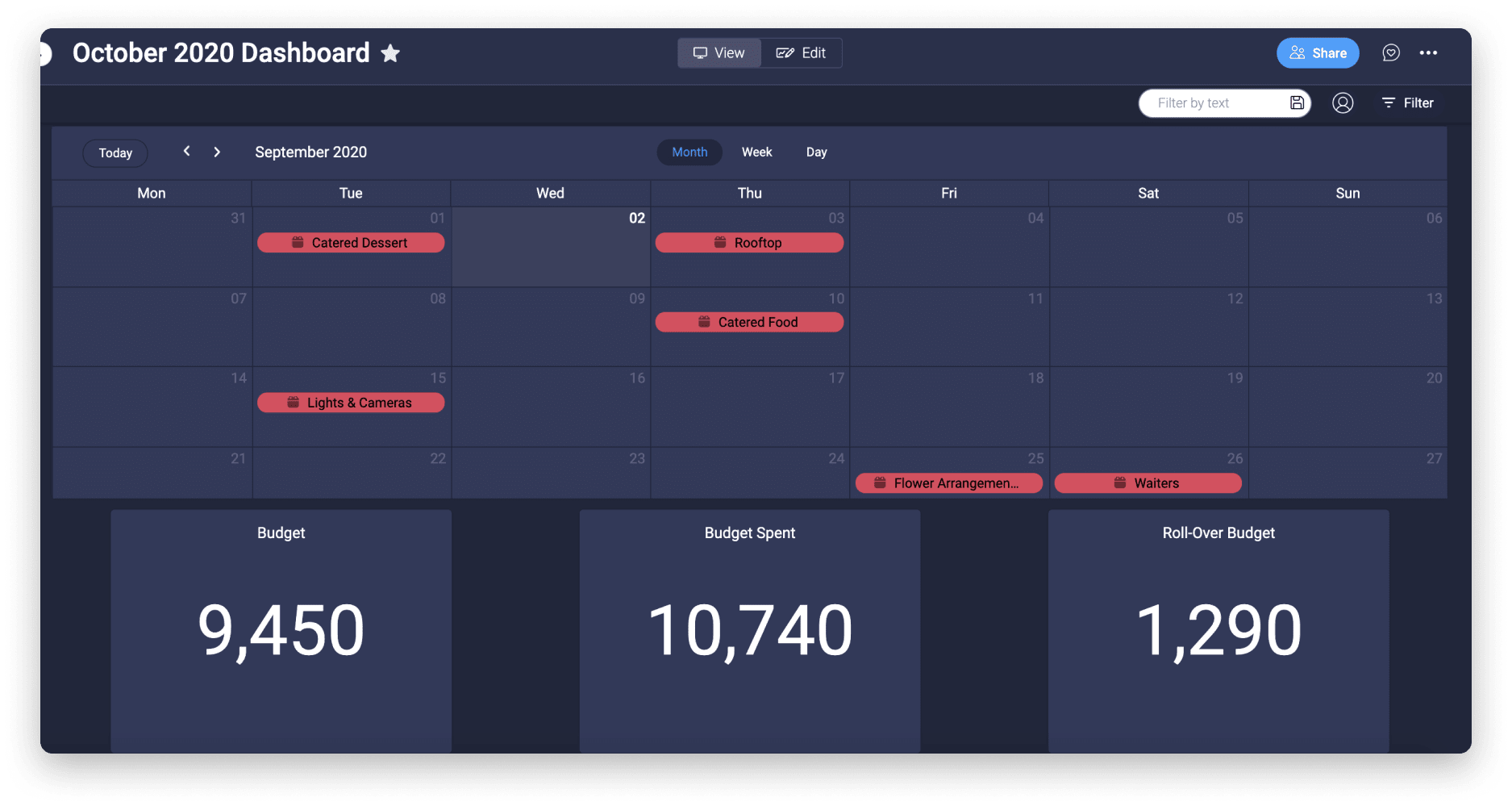Budgets can make or break any project. You’ve got to be able to keep tabs on the cash, time, and resources you’re working with at all times. You’ll also need to always be ready to make adjustments at the drop of a hat.
Sound easy?
Yeah, it’s actually pretty hard. That’s where cost management comes in.
Cost management is all about budgeting, allocating, and controlling costs to make sure that your team always has what they need, where they need it, when they need it.
But, as always, there are a few processes and tools you should be thinking about before diving headfirst into the wonderful world of cost management. This article will explain what cost management is, the cost management process, and how you can use monday.com to manage your expenses and supercharge your cost management skills.
What is cost management?
Cost management is the process that teams use to estimate, allocate, and control costs.
Translation: cost management is all about helping organizations anticipate how much money they need to make sure they don’t run over budget.
That’s pretty critical for companies. After all, if you can’t predict how much money you’re going to need for a project, you could end up running out of cash halfway through.To avoid project failure — and potential business failure — you’ve got to deploy some cash management skills and make sure you’re looking after your team’s resources wisely.
That might sound a bit complicated, but in theory, it’s super simple. Project managers keep an eye on both direct cost and indirect cost using 3 basic stages.
- Planning
- Implementation
- Analysis
The planning stage is where you tally up your projected costs. That’s just a fancy way of saying the amount of money you’re expecting to spend on a particular aspect of an operation or project activity.
The implementation — or ‘execution’ — phase occurs when you spend the money, document the expenses, and track that spending to make sure you’re sticking to your resource planning and project management plan.
After your project is done, you can then analyze success or failure by comparing your predicted costs against your actual costs. That’ll tell you how good your predictions were and give you benchmarks for future cost management plans.

We’ll talk a little bit more about how cost management works in practice a little later. For now, let’s finish working through all the basics.
Why is cost management important?
We’ve talked about what cost management is. But why is cost management so important?
Cost management is important to organizations because it supercharges your project resource planning with 3 major benefits.
- Cost management will help you avoid overruns. If you think hard and plan wisely when allocating costs during the planning stage of a project, it’ll be way easier to avoid overspending on particular aspects of your project.
- Cost management helps you lower risk levels. Let’s face it: stuff happens. Problems arise. You’ve got to plan for that, which is where cost management comes in. A great project manager will budget for a risk allowance during the cost management process so that if unforeseen costs pop up out of nowhere, it won’t derail the project.
- Cost management helps you future-proof your processes. After you’ve finished a project, you’ll be able to compare actual costs versus your projected costs. That’ll give you hard data and reports that show how good your predictions were during the planning stages and whether you’re using your resources efficiently.
Although a lot of this sounds pretty straightforward, it’s important to remember that cost management has a few unique challenges, too. Throughout the cost management process, project managers are constantly going to have to be reassessing and forecasting to combat inaccurate estimates and cost variance.
If a manager hasn’t fully understood the scope of the project during the planning stages, your forecast might end up being pretty far off the mark. That could lead to overruns and hurt your company’s profitability. In other words, getting it right the first time is pretty important.
On a more basic level, the biggest cost management challenge teams normally face is a simple lack of resources. You may sometimes find that senior management has allocated an unrealistic budget, which makes it difficult to get the resources or labor you need to get the job done. You can prepare a monthly budget plan to ensure that your team doesn’t exceed the project budget.
Similarly, a lot of teams use out-of-date technology to try and keep track of their costs. Without the benefit of an intuitive, cloud-based project management platform that can keep tabs on your finances in real-time, cost management can be pretty tricky.
There are plenty of cost management software solutions out there, but why settle for a one-trick pony?
If you want to avoid these pitfalls and make sure your expense tracking slots in with your other project management tasks, you’ve got to make sure you understand the basics and find a more comprehensive solution that will help you streamline processes and supercharge your planning.

How does cost management work?
No two businesses are 100% alike, right? Well, cost management tends to work the same. Everybody’s got their own unique style or way of doing things.
But no matter how flashy or basic you get with your planning, you should always make sure to divide your cost management process into those 3 phases we outlined before. Namely, planning, implementation, and analysis.
The planning phase
This is where the fun starts. Before you lay a road, you’ve got to survey the land, right? Well, the same rule applies to any project.
That’s where planning comes in. This first phase of effective cost management is all about getting together with stakeholders to figure out how much money you’re expecting to need for a project.
That means bearing in mind all the resources you’ll need for each aspect of a project, tallying it all up, and adjusting for a reasonable amount of overspending.
For example, if you’re in the restaurant business, you’ll want to know what ingredients you’ll need for every single dish, the quantities required, and how much those ingredients are going to cost. The process of working all of this stuff out is your planning stage.

The planning phase then typically includes a sign-off at the senior management stage to make sure everybody understands what you’re expecting to spend.
The implementation phase
The implementation phase is all about spending your cash. After your cost management plan has been signed off on by the higher-ups, you can allocate your money. But the implementation phase doesn’t stop there.
Throughout the spending process, you’ve got to constantly monitor and record all costs and then cross reference that cost performance against your budget estimation and project schedule. This helps to make sure you’re sticking to the plan.
Sometimes, you may find you need to do some cost cutting or — if you’re lucky — you can redeploy allocated budget that’s gone underspent in other areas to keep things balanced.
The analysis phase
Think of the analysis phase as your post-game commentary. This is where you sit down, take a look at what’s happened, and try to piece together how you did and what you’ve learned.
The analysis phase takes place after a project has been completed. This part is all about tallying up your budgeted costs throughout each step of the project, and comparing that spending to your budget. Look at any variances in spending to try and spot any patterns or particular areas where you struggled to stay within budget or over budgeted.
These lessons can then be applied to your next cost management exercise to make sure you do a better job of developing accurate budget forecasts that bring value.
Remember: a better cost budget will help you control costs to meet planned value, stay efficient, and make your stakeholders happier.
Using cost management tools
To be fair, a lot of this is easier said than done. That’s why all the best project managers use a Work OS (operating system) to help them manage costs.
What’s a Work OS? A Work OS is a cloud-based software platform that teams can use to build custom workflow apps. A Work OS will allow your teams to plan, run, and track processes, projects, costs, and everyday tasks. It can help you get the job done faster, more efficiently, and on budget.
More important still, any Work OS worth its salt will include budgeting features that help teams keep track of their costs.
Customizable rates and financial field settings make this superfast, while a range of visualization tools make it easy for even the biggest technophobe to understand what it all means at first glance.
A good Work OS will also include reporting and analytics functionality so that you can get real-time updates on how much you’re spending. Automatic weekly or even daily reports mean you’ve always got access to detailed charts that can help you demonstrate to everybody on the team how you’re doing in terms of budget and available resources.
To make sure you can enjoy these benefits, monday.com has a devoted Budget Tracking template designed to give you a clear picture of your budget and easily plan your future spending.
So, want to learn more about Work OS platforms and how they can help you manage your costs? You’ve come to the right place.
How can monday.com help with cost management?
monday.com has been specifically designed to factor in the budgeting part of project management and automate all the boring bits to make cost management pretty simple.
To manage your budget with monday.com, all you’ve got to do is follow 3 easy steps.
- Set up your board. First, all you’ve got to do is create a group for each project or event you’re planning. Next, add some items. These will each represent a task that needs to be done. Once you’ve got these up and running, you can add a few columns to represent the people responsible for each task, its status, and deadlines.
- Create a numbers column to track expenses. Now that your tasks are set up, you can add a number column and fill it with your budget for each task, which will automatically get tallied up to give you your total budget. You can add a 2nd numbers column to input the amount you’ve actually spent to compare against your budget.
- Set up formulas. To make your workflow easier, you can add a few formula columns to help you quickly understand what your numbers mean. The formula column will make sure you always know whether you’re within your cost estimate, how much cash is left, and highlight any unique data that’s important to you.

You can also streamline a lot of this by automating your workflows? To reduce the amount of manual work you and your team have got to do, cook up a few automations.
For example, you can set up automated emails to let your accounting team know every time your team spends over $500 on a particular task or process.
Want to find out more about using monday.com to manage your costs? We’ll break it down for you.
Start crunching those numbers
At the end of the day, cost management is pretty important. The process is specifically designed to make sure you’re properly estimating, allocating, and controlling every single cost involved in your team’s projects.
Without having a dynamic and detailed budget, it’s going to be pretty much impossible to make sure you’ve got enough cash and resources to pay every expense and see your project through to the end.
But don’t worry, because with monday.com it’s actually pretty simple. We’ve got all the budgeting and reporting tools, integrations, and templates you need to keep within your budget and knock your projects out of the park.
So, are you ready to find out how monday.com can supercharge your cost management? Try it free now.

